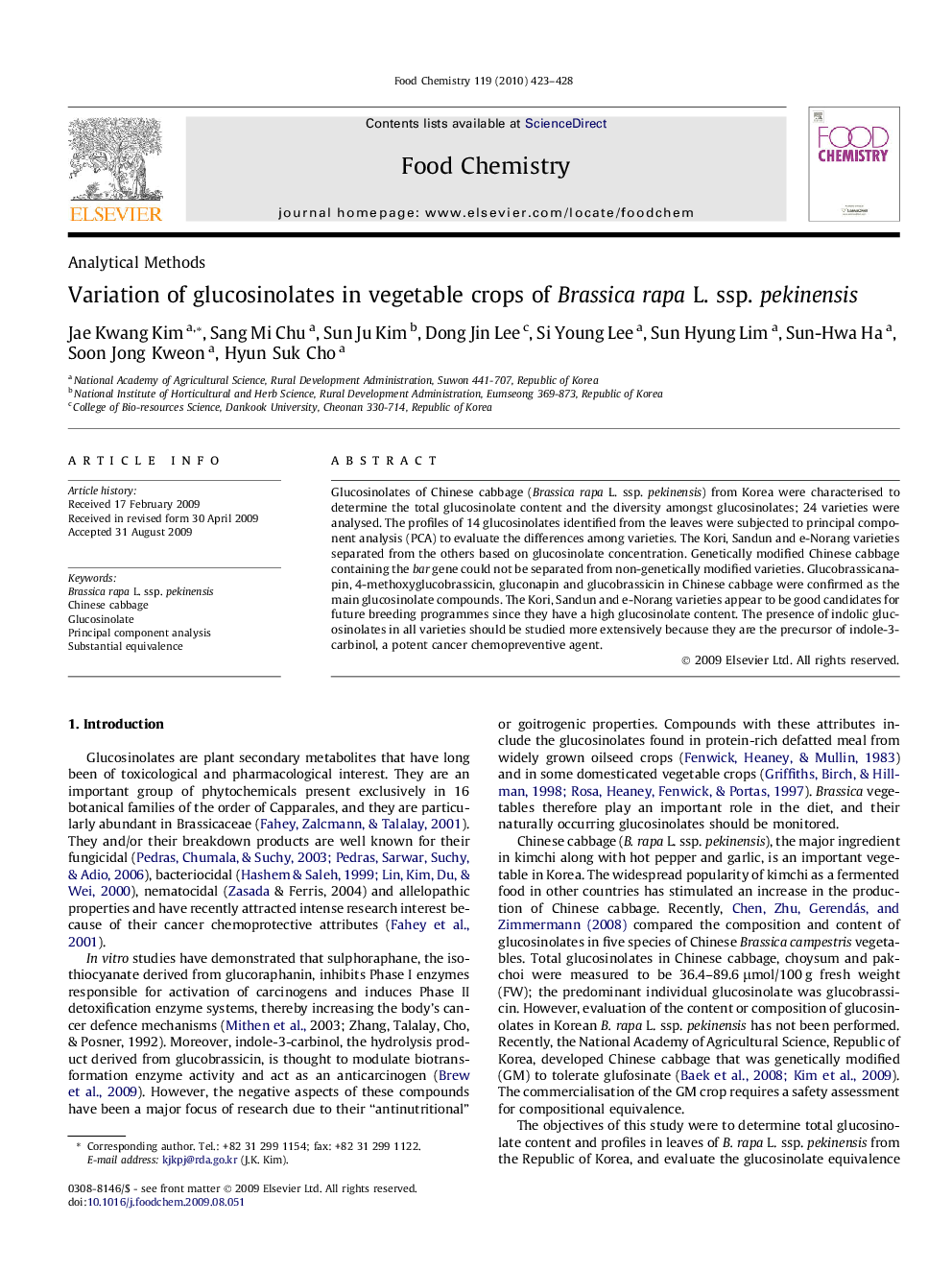| Article ID | Journal | Published Year | Pages | File Type |
|---|---|---|---|---|
| 1186806 | Food Chemistry | 2010 | 6 Pages |
Glucosinolates of Chinese cabbage (Brassica rapa L. ssp. pekinensis) from Korea were characterised to determine the total glucosinolate content and the diversity amongst glucosinolates; 24 varieties were analysed. The profiles of 14 glucosinolates identified from the leaves were subjected to principal component analysis (PCA) to evaluate the differences among varieties. The Kori, Sandun and e-Norang varieties separated from the others based on glucosinolate concentration. Genetically modified Chinese cabbage containing the bar gene could not be separated from non-genetically modified varieties. Glucobrassicanapin, 4-methoxyglucobrassicin, gluconapin and glucobrassicin in Chinese cabbage were confirmed as the main glucosinolate compounds. The Kori, Sandun and e-Norang varieties appear to be good candidates for future breeding programmes since they have a high glucosinolate content. The presence of indolic glucosinolates in all varieties should be studied more extensively because they are the precursor of indole-3-carbinol, a potent cancer chemopreventive agent.
